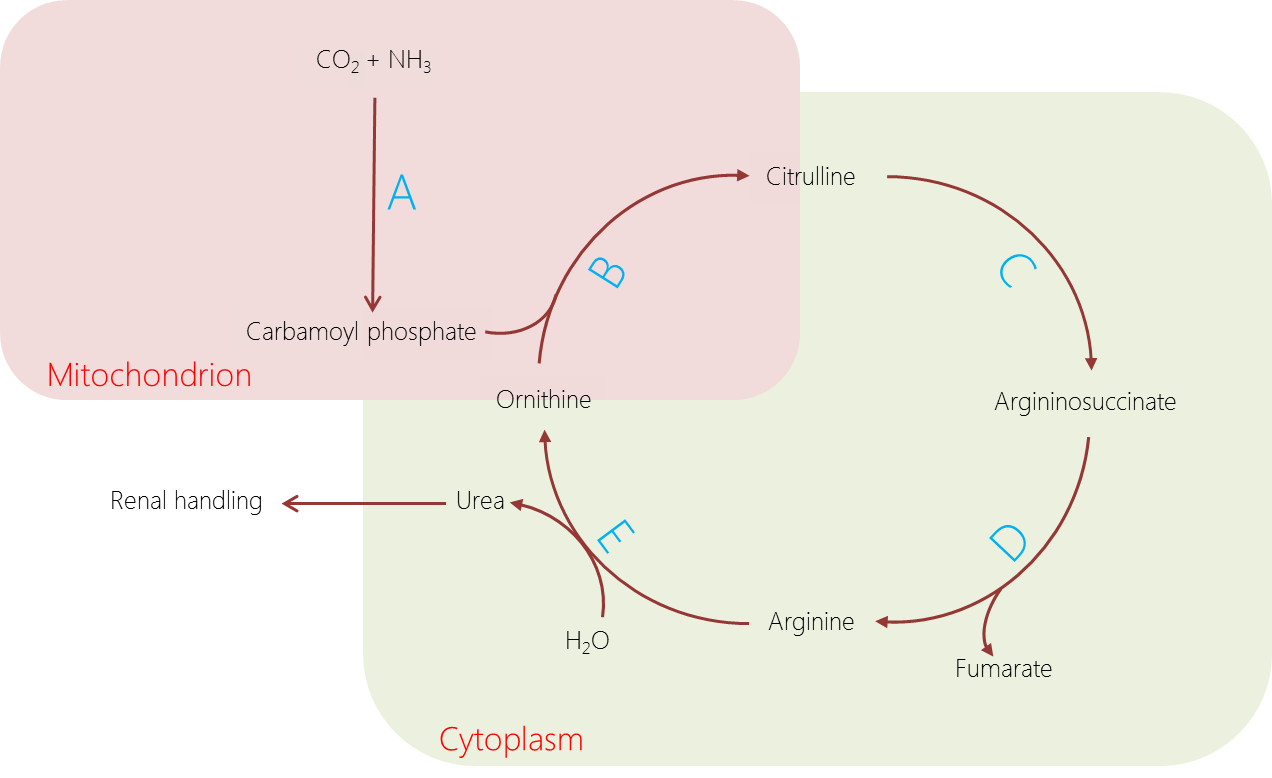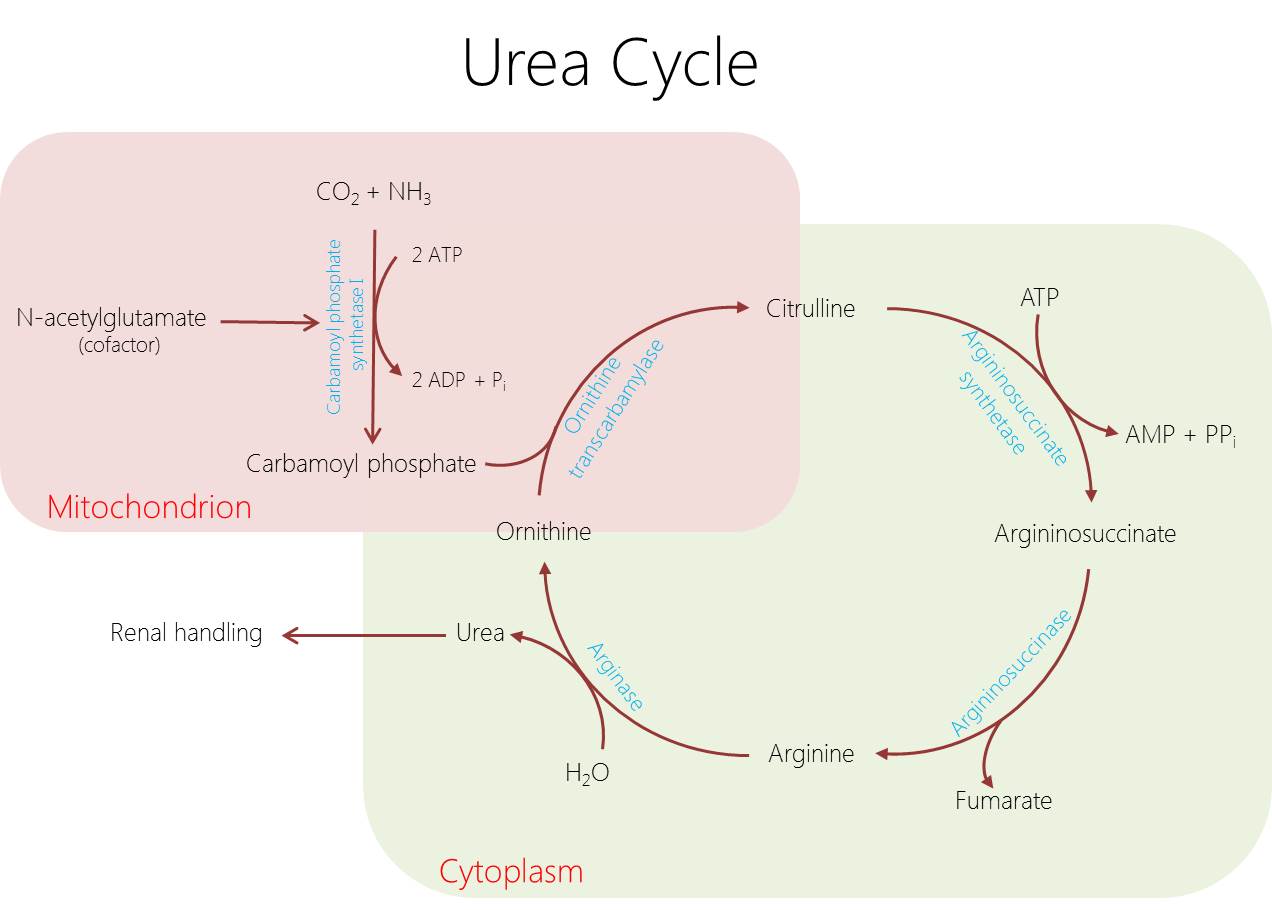WBR0974: Difference between revisions
Rim Halaby (talk | contribs) No edit summary |
YazanDaaboul (talk | contribs) No edit summary |
||
| Line 1: | Line 1: | ||
{{WBRQuestion | {{WBRQuestion | ||
|QuestionAuthor={{Rim}} | |QuestionAuthor={{Rim}} (Reviewed by {{YD}}) | ||
|ExamType=USMLE Step 1 | |ExamType=USMLE Step 1 | ||
|MainCategory=Biochemistry | |MainCategory=Biochemistry | ||
| Line 8: | Line 8: | ||
|MainCategory=Biochemistry | |MainCategory=Biochemistry | ||
|SubCategory=General Principles | |SubCategory=General Principles | ||
|MainCategory=Biochemistry | |||
|MainCategory=Biochemistry | |MainCategory=Biochemistry | ||
|MainCategory=Biochemistry | |MainCategory=Biochemistry | ||
| Line 20: | Line 21: | ||
|MainCategory=Biochemistry | |MainCategory=Biochemistry | ||
|SubCategory=General Principles | |SubCategory=General Principles | ||
|Prompt=A | |Prompt=A 6-year-old boy is brought to the physician's office for lethargy and hallucinations. His mother states that her son has always been healthy until a few days ago, when he had flu-like symptoms for which he received supportive care. Since then, he has been sleepy and has vomited several times. The mother also explains she was concerned when she overheard her boy earlier today speaking to tigers and lions in his bedroom. Further investigation demonstrates elevated serum ammonia concentration. A disorder of the urea cycle is suspected and more extensive laboratory tests and genetic studies are ordered. Which of the following steps of the urea cycle is directly involved in the release of the urea molecules?<br> | ||
[[File:WBR0972fig.png|700px]] | |||
Which of the following steps of the urea cycle is directly | |||
|Explanation=Urea cycle disorders are a spectrum of metabolic disorders that range from an asymptomatic course to rapidly fatal disease. Depending on the severity of enzyme deficiency, urea cycle disorders may manifest at birth, during the neonatal period, or during childhood. Typically, episodes of hyperammonemia may be triggered by [[stress]] or [[infection]]. Normally, hepatocytes are able to eliminate ammonia to prevent its toxic build-up. Ammonia undergoes a series of reactions (urea cycle) that eventually convert ammonia to urea, which is a non-toxic, water-soluble compound. In patients with enzyme deficiencies, ammonia is not adequately eliminated, resulting hyperammonemia. Symptoms of hyperammonemia are usually non-specific and include [[nausea]], [[vomiting]], [[lethargy]], [[seizure]]s, [[hallucination]]s, and [[somnolence]]. If left untreated, hyperammonemia results in coma and death. | |||
[[ | The urea cycle involves a set of 5 enzymes that collectively convert ammonia to urea. While all reactions occur within hepatocytes, 2 of the urea cycle enzymes are present in the mitochondria, whereas the remaining enzymes are present in the cytoplasm:<br> | ||
*The [[mitochondria|mitochondrial]] enzymes are carbamoyl phosphate synthetase I and [[OTC|ornithine transcarbamylase]] (OTC)<br> | |||
*The cytoplasmic enzymes are argininosuccinate synthetase, argininosuccinase, and [[arginase]] | |||
Urea is produced during the reaction that is catalyzed by arginase. This reaction results in the formation of ornithine and urea from arginine and water. Following synthesis, urea is released into the bloodstream and is then handled by the kidneys.<br> | |||
Urea is | |||
Shown below is an illustration of the reactions of the [[urea cycle]], all of which occur in hepatocytes in the liver<br> | |||
[[File:Urea Cycle.jpg|800px]] | |||
|AnswerA=A | |AnswerA=A | ||
|AnswerAExp=A corresponds to the enzyme carbamoyl phosphate synthetase I which catalyzes the | |AnswerAExp=A corresponds to the enzyme carbamoyl phosphate synthetase I, which catalyzes the reaction that produces carbamoyl phosphate from [[ammonia]] and [[carbon dioxide]]. | ||
|AnswerB=B | |AnswerB=B | ||
|AnswerBExp=B corresponds to [[OTC|ornithine transcarbamoylase]] which catalyzes the | |AnswerBExp=B corresponds to [[OTC|ornithine transcarbamoylase]], which catalyzes the reaction that produces citrulline from [[ornithine]] and [[carbamoyl phosphate]]. | ||
|AnswerC=C | |AnswerC=C | ||
|AnswerCExp=C corresponds to | |AnswerCExp=C corresponds to argininosuccinate synthetase, which catalyzes the the reaction that produces argininosuccinate from citrulline, aspartate, and ATP. | ||
|AnswerD=D | |AnswerD=D | ||
|AnswerDExp=D corresponds to | |AnswerDExp=D corresponds to argininosuccinase, which catalyzes the reaction that produces arginine and fumarate from argininosuccinate. | ||
|AnswerE=E | |AnswerE=E | ||
|AnswerEExp=E corresponds to [[arginase]] which is | |AnswerEExp=E corresponds to [[arginase]], which catalyzes the reaction the produces ornithine and urea from arginine and water. Urea is then released into the bloodstream. | ||
|EducationalObjectives=Urea is produced during the reaction that is catalyzed by arginase. This reaction results in the formation of ornithine and urea from arginine and water. | |||
|RightAnswer=E | |RightAnswer=E | ||
|WBRKeyword=Urea cycle, | |WBRKeyword=Urea cycle, Arginine, Arginase, Urea, Urea synthesis, Ammonia, Reaction, Enzyme, Lethargy, Hallucinations | ||
|Approved= | |Approved=Yes | ||
}} | }} | ||
Revision as of 18:41, 10 March 2015
| Author | [[PageAuthor::Rim Halaby, M.D. [1] (Reviewed by Yazan Daaboul, M.D.)]] |
|---|---|
| Exam Type | ExamType::USMLE Step 1 |
| Main Category | MainCategory::Biochemistry |
| Sub Category | SubCategory::General Principles |
| Prompt | [[Prompt::A 6-year-old boy is brought to the physician's office for lethargy and hallucinations. His mother states that her son has always been healthy until a few days ago, when he had flu-like symptoms for which he received supportive care. Since then, he has been sleepy and has vomited several times. The mother also explains she was concerned when she overheard her boy earlier today speaking to tigers and lions in his bedroom. Further investigation demonstrates elevated serum ammonia concentration. A disorder of the urea cycle is suspected and more extensive laboratory tests and genetic studies are ordered. Which of the following steps of the urea cycle is directly involved in the release of the urea molecules? |
| Answer A | AnswerA::A |
| Answer A Explanation | [[AnswerAExp::A corresponds to the enzyme carbamoyl phosphate synthetase I, which catalyzes the reaction that produces carbamoyl phosphate from ammonia and carbon dioxide.]] |
| Answer B | AnswerB::B |
| Answer B Explanation | [[AnswerBExp::B corresponds to ornithine transcarbamoylase, which catalyzes the reaction that produces citrulline from ornithine and carbamoyl phosphate.]] |
| Answer C | AnswerC::C |
| Answer C Explanation | AnswerCExp::C corresponds to argininosuccinate synthetase, which catalyzes the the reaction that produces argininosuccinate from citrulline, aspartate, and ATP. |
| Answer D | AnswerD::D |
| Answer D Explanation | AnswerDExp::D corresponds to argininosuccinase, which catalyzes the reaction that produces arginine and fumarate from argininosuccinate. |
| Answer E | AnswerE::E |
| Answer E Explanation | [[AnswerEExp::E corresponds to arginase, which catalyzes the reaction the produces ornithine and urea from arginine and water. Urea is then released into the bloodstream.]] |
| Right Answer | RightAnswer::E |
| Explanation | [[Explanation::Urea cycle disorders are a spectrum of metabolic disorders that range from an asymptomatic course to rapidly fatal disease. Depending on the severity of enzyme deficiency, urea cycle disorders may manifest at birth, during the neonatal period, or during childhood. Typically, episodes of hyperammonemia may be triggered by stress or infection. Normally, hepatocytes are able to eliminate ammonia to prevent its toxic build-up. Ammonia undergoes a series of reactions (urea cycle) that eventually convert ammonia to urea, which is a non-toxic, water-soluble compound. In patients with enzyme deficiencies, ammonia is not adequately eliminated, resulting hyperammonemia. Symptoms of hyperammonemia are usually non-specific and include nausea, vomiting, lethargy, seizures, hallucinations, and somnolence. If left untreated, hyperammonemia results in coma and death.
The urea cycle involves a set of 5 enzymes that collectively convert ammonia to urea. While all reactions occur within hepatocytes, 2 of the urea cycle enzymes are present in the mitochondria, whereas the remaining enzymes are present in the cytoplasm:
Urea is produced during the reaction that is catalyzed by arginase. This reaction results in the formation of ornithine and urea from arginine and water. Following synthesis, urea is released into the bloodstream and is then handled by the kidneys. Shown below is an illustration of the reactions of the urea cycle, all of which occur in hepatocytes in the liver |
| Approved | Approved::Yes |
| Keyword | WBRKeyword::Urea cycle, WBRKeyword::Arginine, WBRKeyword::Arginase, WBRKeyword::Urea, WBRKeyword::Urea synthesis, WBRKeyword::Ammonia, WBRKeyword::Reaction, WBRKeyword::Enzyme, WBRKeyword::Lethargy, WBRKeyword::Hallucinations |
| Linked Question | Linked:: |
| Order in Linked Questions | LinkedOrder:: |

